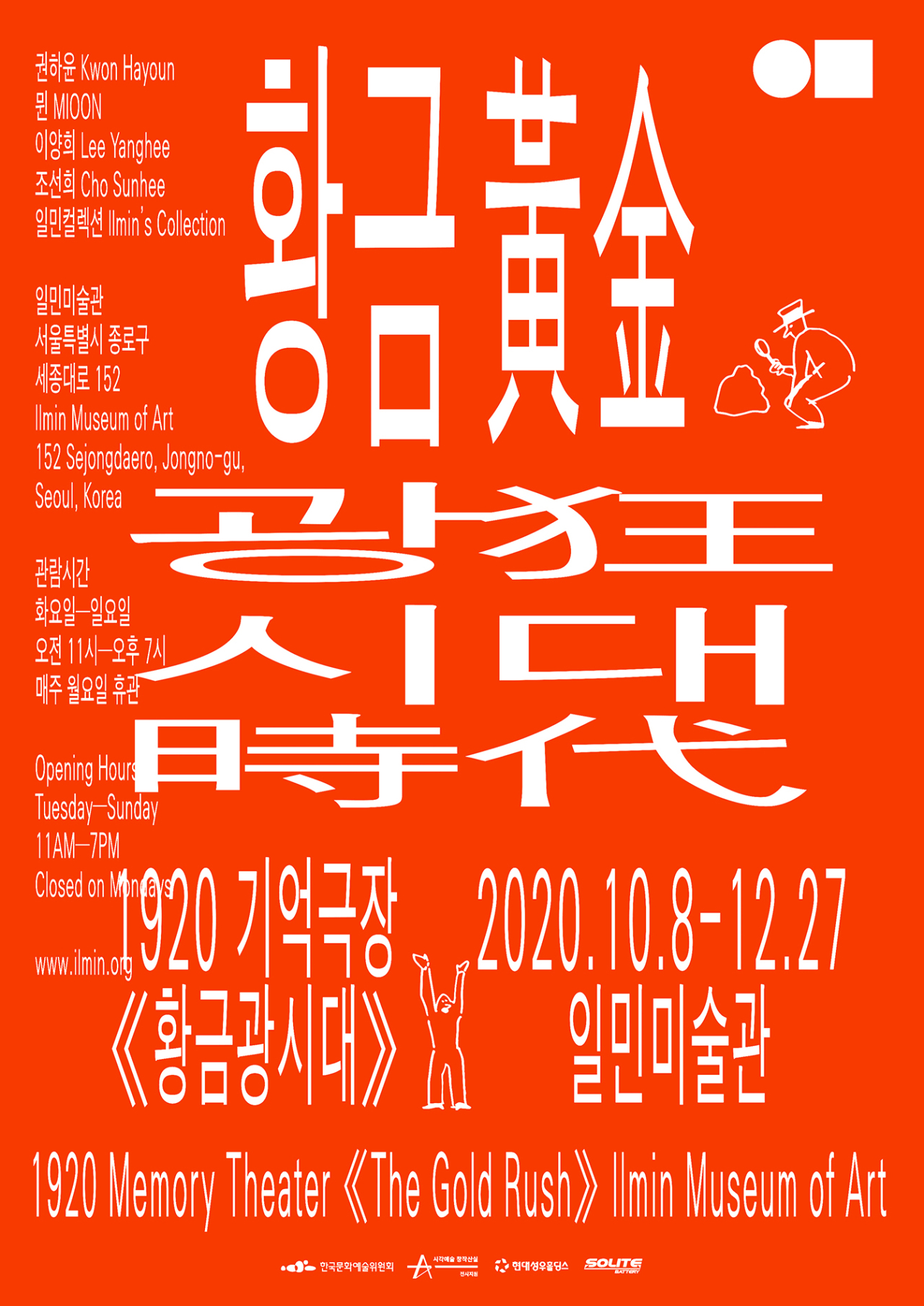
When you think of Seoul 100 years ago, what comes to mind? The exhibition “The Gold Rush: 1920 Memory Theater” at Ilmin Museum of Art will take you back in time through newspapers and magazines of the era, along with masterpieces painted by modern and contemporary artists.
The exhibition at Ilmin Museum of Art in central Seoul, which opened Oct. 8 and runs through Dec. 27, offers a break from the COVID-19 pandemic times. In the 1920s, during the Japanese colonial era, the city was known as Gyeongseong.
The exhibition highlights print media sources, including daily newspapers and magazines, published in the 1920s and 1930s. The title satirizes the gold rush, a time when people were fanatical about gold mining after the Great Depression, which started in 1929 in the US.
The museum’s collection of 100 masterpieces by Korean modern and contemporary artists such as Kim Whan-ki, Park Soo-keun, Chang Uc-chin, Park Seo-bo and Cheon Kyeong-ja is on display, offering a glimpse into the Japanese colonial era and the post-colonial era in Korea.
Some Korean novels that depict the times will be part of the exhibition; the novel “Three Women (translated),” which depicts the lives of three fictitious feminist women in the 1920s, will be organized as an exhibition. Also, Kwon Ha-youn, a film director, showcases an installation work inspired by the novel “A Day in the Life of Kubo the Novelist,” written by Park Tae-won in 1933. It depicts the daily routine of a Korean intellectual who feels a bitter sense of helplessness during the colonial era.
The museum is closed on Mondays, and tickets cost 7,000 won for adults and 5,000 won for teenagers.
By Park Yuna (yunapark@heraldcorp.com)
The exhibition at Ilmin Museum of Art in central Seoul, which opened Oct. 8 and runs through Dec. 27, offers a break from the COVID-19 pandemic times. In the 1920s, during the Japanese colonial era, the city was known as Gyeongseong.
The exhibition highlights print media sources, including daily newspapers and magazines, published in the 1920s and 1930s. The title satirizes the gold rush, a time when people were fanatical about gold mining after the Great Depression, which started in 1929 in the US.
The museum’s collection of 100 masterpieces by Korean modern and contemporary artists such as Kim Whan-ki, Park Soo-keun, Chang Uc-chin, Park Seo-bo and Cheon Kyeong-ja is on display, offering a glimpse into the Japanese colonial era and the post-colonial era in Korea.
Some Korean novels that depict the times will be part of the exhibition; the novel “Three Women (translated),” which depicts the lives of three fictitious feminist women in the 1920s, will be organized as an exhibition. Also, Kwon Ha-youn, a film director, showcases an installation work inspired by the novel “A Day in the Life of Kubo the Novelist,” written by Park Tae-won in 1933. It depicts the daily routine of a Korean intellectual who feels a bitter sense of helplessness during the colonial era.
The museum is closed on Mondays, and tickets cost 7,000 won for adults and 5,000 won for teenagers.
By Park Yuna (yunapark@heraldcorp.com)








![[Graphic News] More Koreans say they plan long-distance trips this year](http://res.heraldm.com/phpwas/restmb_idxmake.php?idx=644&simg=/content/image/2024/04/17/20240417050828_0.gif&u=)
![[KH Explains] Hyundai's full hybrid edge to pay off amid slow transition to pure EVs](http://res.heraldm.com/phpwas/restmb_idxmake.php?idx=644&simg=/content/image/2024/04/18/20240418050645_0.jpg&u=20240419100350)






![[From the Scene] Monks, Buddhists hail return of remains of Buddhas](http://res.heraldm.com/phpwas/restmb_idxmake.php?idx=652&simg=/content/image/2024/04/19/20240419050617_0.jpg&u=20240419175937)

![[KH Explains] Hyundai's full hybrid edge to pay off amid slow transition to pure EVs](http://res.heraldm.com/phpwas/restmb_idxmake.php?idx=652&simg=/content/image/2024/04/18/20240418050645_0.jpg&u=20240419100350)

![[Today’s K-pop] Illit drops debut single remix](http://res.heraldm.com/phpwas/restmb_idxmake.php?idx=642&simg=/content/image/2024/04/19/20240419050612_0.jpg&u=)